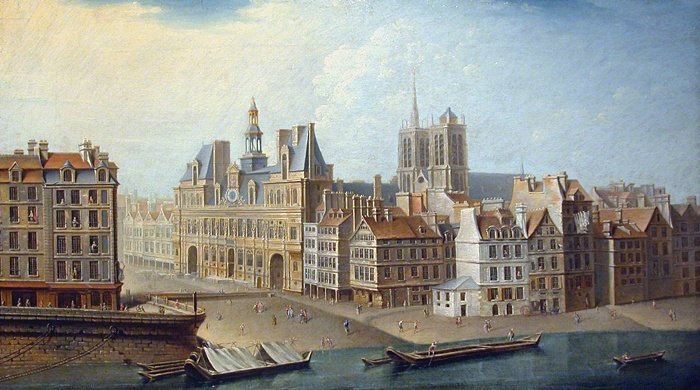
Nicolas-Jean-Baptiste Raguenet, Hôtel de Ville et Place de Grève, 1753 (Paris, Musée Carnavalet)
Leopold Mozart to Johann Lorenz Hagenauer, Paris, 22 February 1764:- As a result of what I’ve told you about the wet weather, I must add that the Seine was so amazingly high about 2 weeks ago that the people here had to cross the Place de Grève in boats, and many parts of the city, towards the river, were impassable.
[1] See Leopold Mozart's letter to Johann Lorenz Hagenauer, Paris, 4 March 1764: 'Here the Place de Grève is where criminals are dispatched to the other world. Anyone who is a lover of these executions has something to see almost every day. Recently a serving girl, cook and coachman were hanged together side by side. They served a blind rich widow from whom they had stolen 30000 Louis d’or.'